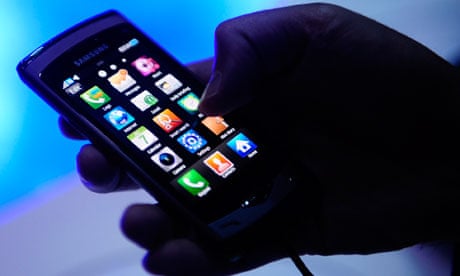There has been an explosion in the use of smartphones. Around 270m handsets were sold in 2010, while CNN Fortune has forecast that sales could exceed 500m in 2011. With the price of entry-level handsets expected to fall to $100 or below, growth is likely to accelerate and smartphones will become more accessible to consumers in developing countries.
Smartphone owners use them on the move to access information and entertainment such as music, audio books, reading, and for viewing photos and video clips. One-third of Facebook traffic is now via these devices used simultaneously for instant messaging, email and Twitter.
The mobile phone application, or app, brings all the above to life in one self-contained mini-program. The growth in apps for communication, gaming and simple utility (finding the quickest route on public transport) is phenomenal. Apps seem to be everywhere, often created for quite short-term uses: event apps, conference planners, even the small hotel in Berlin I stayed in recently had its own free app for guests.
Apps are often seen as synonymous with the iPhone, which has been the leader in this area, but many commentators expect the Android operating system, which works on smartphones from other manufacturers, to overtake Apple.
Apps have enormous potential for language learning because they allow for multisensory learning on the move: for learners to use nuggets of time in a queue or on public transport. And because smartphones can store so much data or retrieve it via the internet, apps can serve as rich media dictionaries and reference tools.
But when Paul Sweeney of digital learning consultancy Eduworlds Knowledge and I surveyed language learning apps recently, we were disappointed at what we found.
First, of the estimated 2m apps available, we found only 800 or so were for language learning. Nearly all of them were on Apple's App Store. We found some useful dictionaries from mainstream publishers in the UK and the US, and a growing number of bilingual dictionaries of variable quality. We liked some of the features we found, such as the ability to upload your own words, and personalise definitions by adding your own photographs in a couple of vocabulary learning apps, and we liked the scoring and tracking routines that we found motivated us in our own language learning.
Our list of negative attributes is longer: too many translations, not enough sound or pictures, a huge number of ugly and pointless flashcard apps, and reference books dumped into apps (in one case we spotted images scanned directly from the book). There was over-reliance on multiple choice and true/false questions.
The basic rules of user-interface design were often ignored and we found poor navigation, ugly design and bugs. Some producers have just dropped their apps into the relevant marketplace thinking "job done", whereas successful developers constantly monitor feedback and regularly update their apps with extra content and enhanced functionality.
We found little exploitation of the smartphone's "superpowers" such as its touch screen, motion sensors, location detector, calendar notification and connections with other users. We saw little of the ingenuity of apps such as Instapaper, which allows you to bookmark online articles to read offline on the move, or the immersive gaming environments we have seen outside language learning.
The business models for mobile apps are fast-changing, and it's difficult to get a pricing strategy right first time, but we saw many language apps that were too expensive, either with a high up-front price tag, or with limited free content, and requiring an expensive in-app purchase for a modest amount of content. This is unpopular with consumers who are getting accustomed to high-quality utility or games apps at low cost or even free.
These problems are not just restricted to mobile apps, as I found when helping judge the English-Speaking Union's President's Award for innovation and design in technology for English learning materials. We found similar shortcomings in many of the web or CD-Rom-based entries.
Martin Mulloy, the ESU's director of education, commented: "Overall the level of design was poor, particularly in an area where design values are generally very high and a major aspect of a digital product's attractiveness, usability and functionality. Many UK publishers have not embraced the contemporary role of media, especially with younger learners. A digital approach should be at the heart of any contemporary learning experience."
One underlying problem seems to be that traditional publishers have struggled with learning technologies in the last 15 years, and some major commercial failures have made them learn to be cautious about investing real energy and resources in this area.
Paul Sweeney believes it is too early to condemn them: "We are at an early but important stage of mobile learning development: only beginning to understand the potential of an iPhone-sized device versus an iPad-sized device, only beginning to explore what type and format of content works best and understand how learner behaviour changes when exploiting these devices to their potential."
The ELT sector needs to explore these technologies more closely, but I also think the sector would benefit from newcomers with fresh perspectives who could find ways of engaging learners with materials that match the design and ingenuity of the gaming industry.
In the meantime, teachers should guide their learners to apps that are genuinely useful. Many of these apps will not be intended for language learning, but they can help develop extensive reading and listening skills.
Caroline Moore is the founder of Constellata, which provides consultancy, training and project management in the use of digital technologies for language learning (constellata.com)
